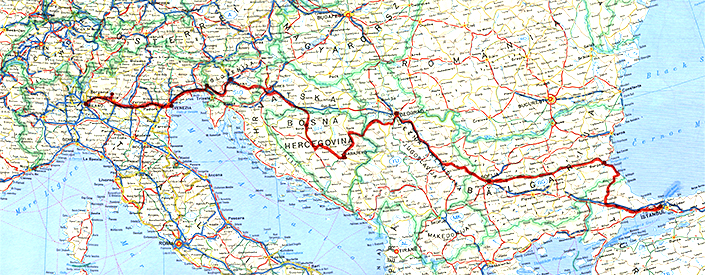
L’itinerario che le spose hanno percorso, da Milano a Istanbul, facendo tappa a: Sale Marasino (BS), Venezia, Gorizia, Lubiana, Banja Luka, Saraievo, Belgrado, Sofia e Burgas.
The routes followed by the brides, from Milan to Istanbul, stopping in Sale Marasino (BS), Venice, Gorizia, Ljubjana, banja Luka, Sarajevo, Sofia and Burgas.
| “Il viaggio è da sempre un mezzo ed un fine, è una scelta di vita o per alcuni l’unico modo possibile di vivere; è la metafora della vita stessa.
Viaggiare con mezzi poveri mette in relazione il viaggiatore con la popolazione locale; viaggiare in autostop, fa sì che uno straniero si metta nelle mani di altri viaggiatori, ma ancora più spesso dei locali o di chi dello spostamento ha fatto il suo mestiere. *Dal comunicato stampa diffuso da Pippa e Silvia in partenza l’8 marzo 2008. |
“Travelling has always been a means and an end. It is a way of life for some and for some the only possible way to living; it is the metaphore for life itself.
Travelling on a shoestring forces the traveler in contact with the local population; the hitchhiking puts himself in the hands of fellow travelers, or more often of locals or travel professionals. *From the press release of Pippa and Silvia’s departure on March 8, 2008. |

Fotografia di Danilo Borrelli
Photograph by Danilo Borrelli










| Pippa viaggiava in autostop da quando era bambina, prima accompagnata dalla mamma naturalmente, e poi da sola. Per lei l’autostop era un modo normale di muoversi e lo faceva spessissimo; quasi tutti i week-end andava a trovare qualche amica o amico in Italia o all’estero e sempre in autostop. Non avrebbe potuto scegliere nessun altro modo di viaggiare, per questo progetto. Facendo l’autostop infatti si ha un canale privilegiato per entrare in contatto con le popolazioni locali “e tra l’altro di tutte le classi sociali e culturali indistintamente, perché si può ricevere un passaggio da un manager o un professore, come da operai e camionisti (proprio per facilitare questo contatto con le persone incontrate nella seconda metà del viaggio, Pippa studiava l’arabo da più di un anno). La fiducia nel prossimo, l’idea che la stragrande maggioranza degli incontri siano positivi, con brava gente, disposta ad aiutarti è un ingrediente necessario per partire in autostop; questa fiducia si conferma strada facendo, con l’accumularsi di esperienze quasi sempre positive. Infatti giustamente Pippa non riteneva che ci fosse nessun pericolo nello spostarsi così: l’unica cosa che mi spaventa è il freddo… e le bestie feroci, ma dove vado non credo ce ne siano!”, aveva detto in un’intervista. | Pippa began thumbing as a child, in the company of her mother at first, and later alone. For her it was the normal way of getting around; almost every week-end she would go to meet friends in Italy or abroad, always hitchhiking her way. For this project, she could not have even considered any other option. Hitchhiking gives you privileged access to local people “with no barriers of social classes or culture. The driver could be manager, a worker or a trucker (to facilitate communications with these chance acquaintances during the second half of the trip, Pippa studied Arabic for more than a year). Faith in one’s neighbour, the idea that the overwhelming majority of meetings will be positive, with friendly, helpful people, is the essential prerequisite hitchhiking; this faith is reaffirmed on the road, with the accumulation of positive experiences. Pippa considered this form of travel to be free of danger: the only thing that scares me is the cold… and wild animals, but where I am going that’s unlikely”, she said in an interview. |
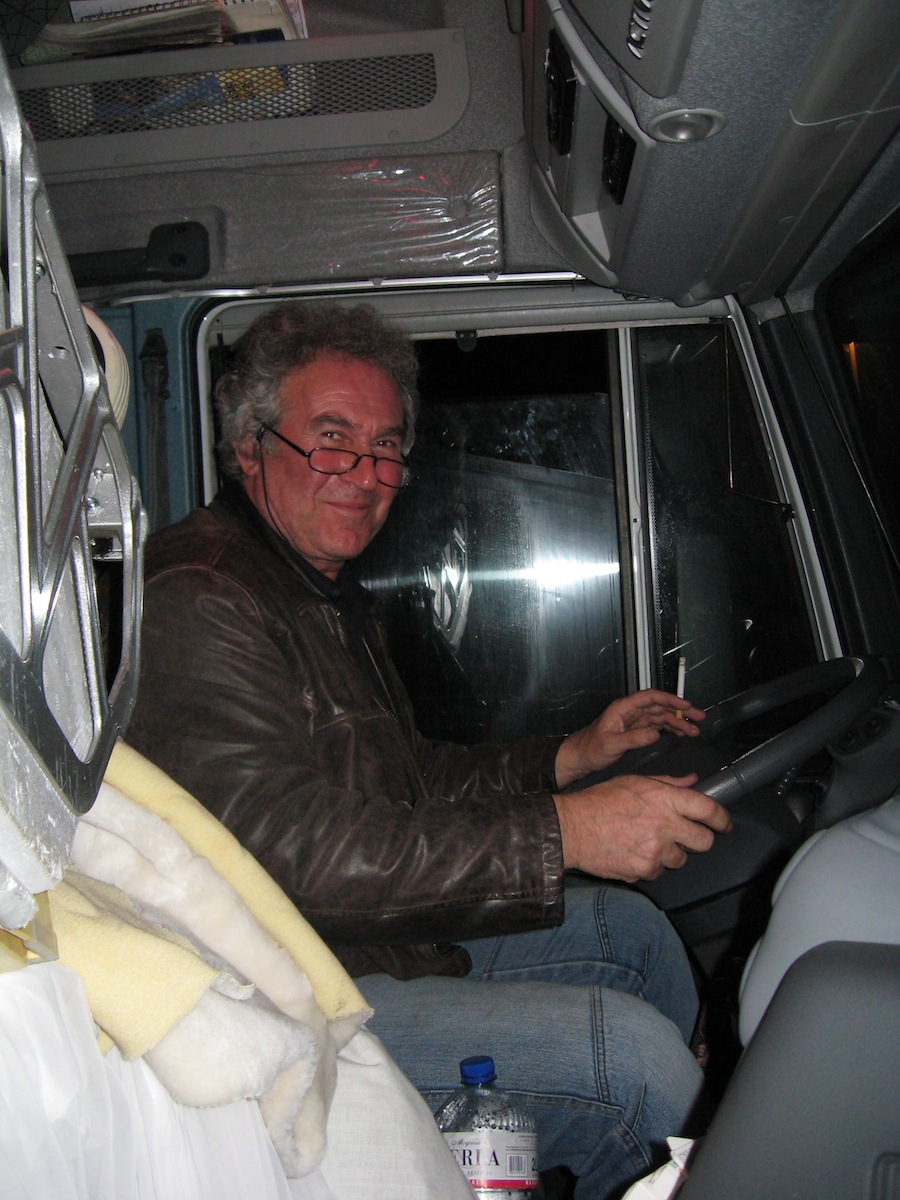
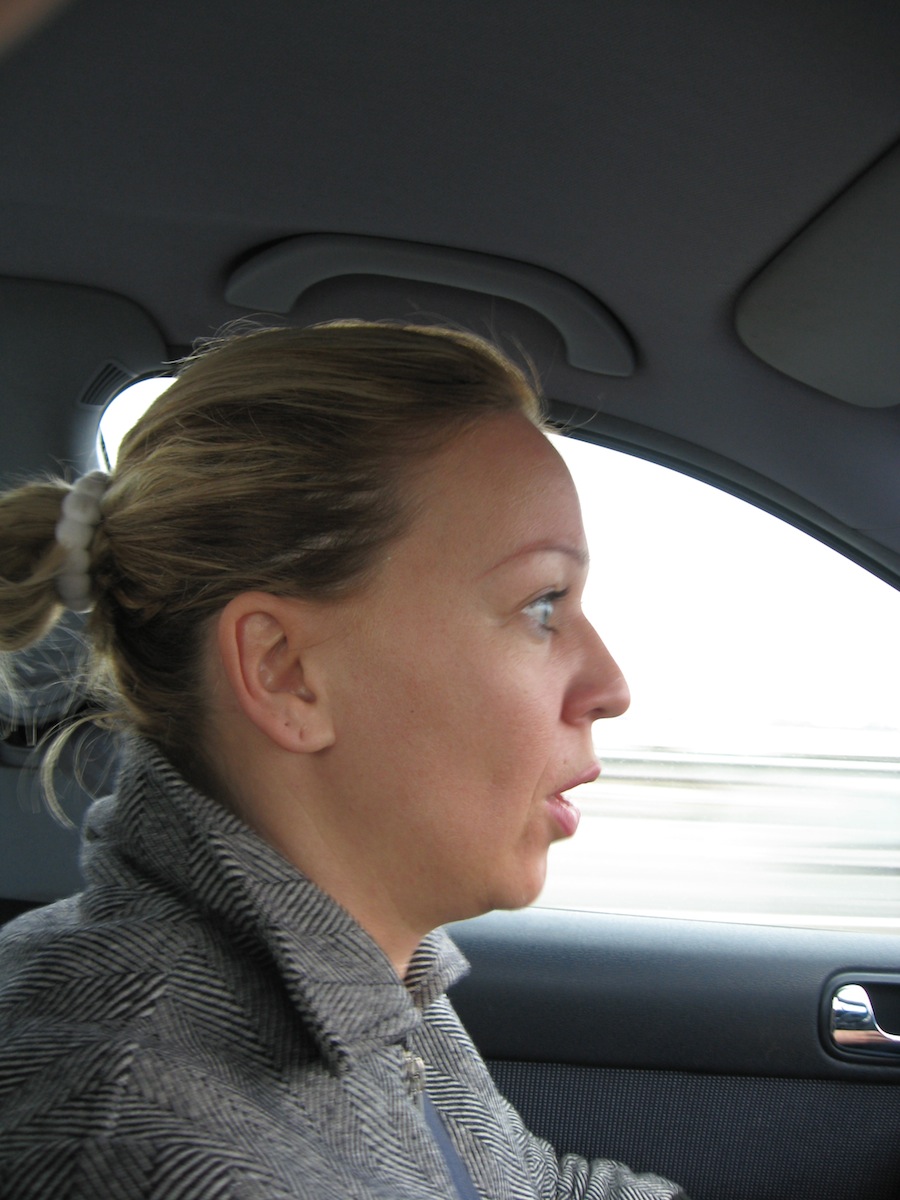
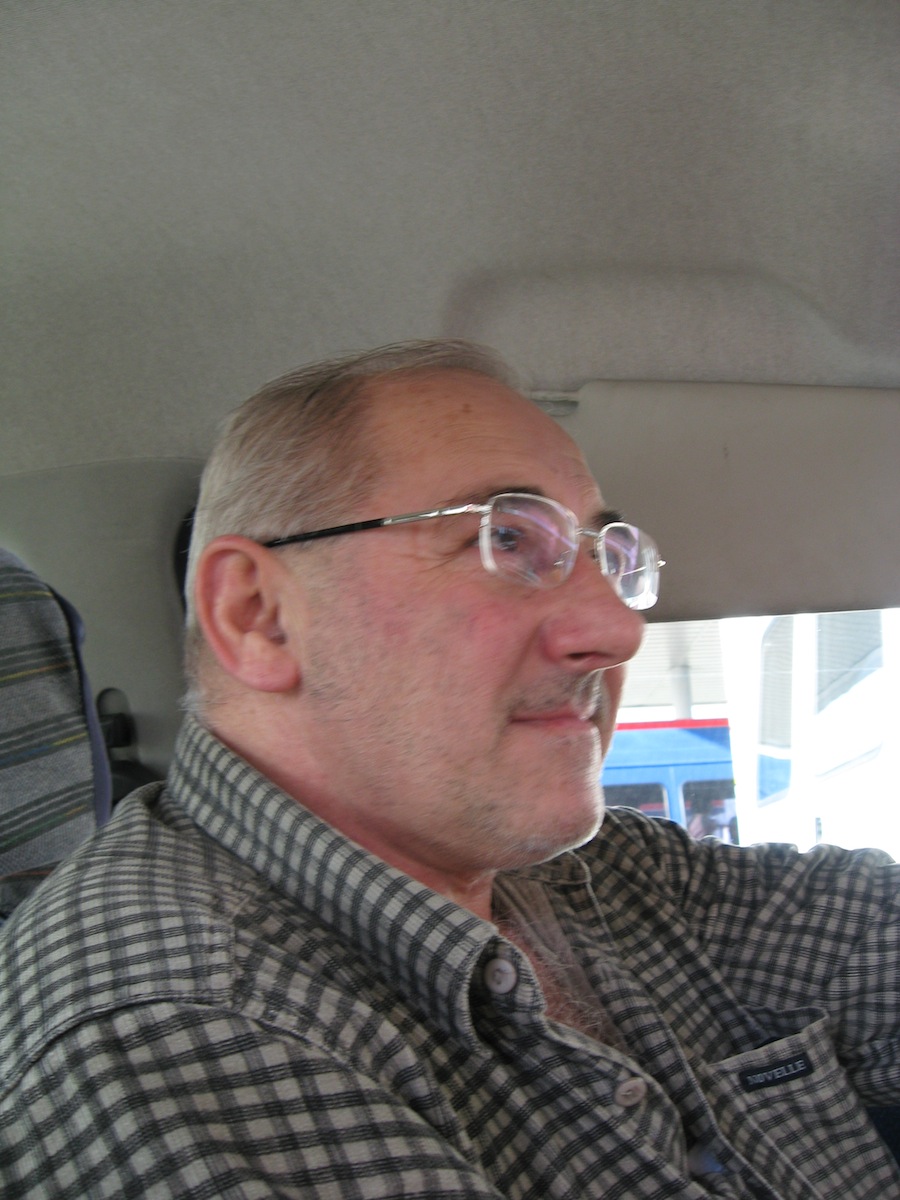
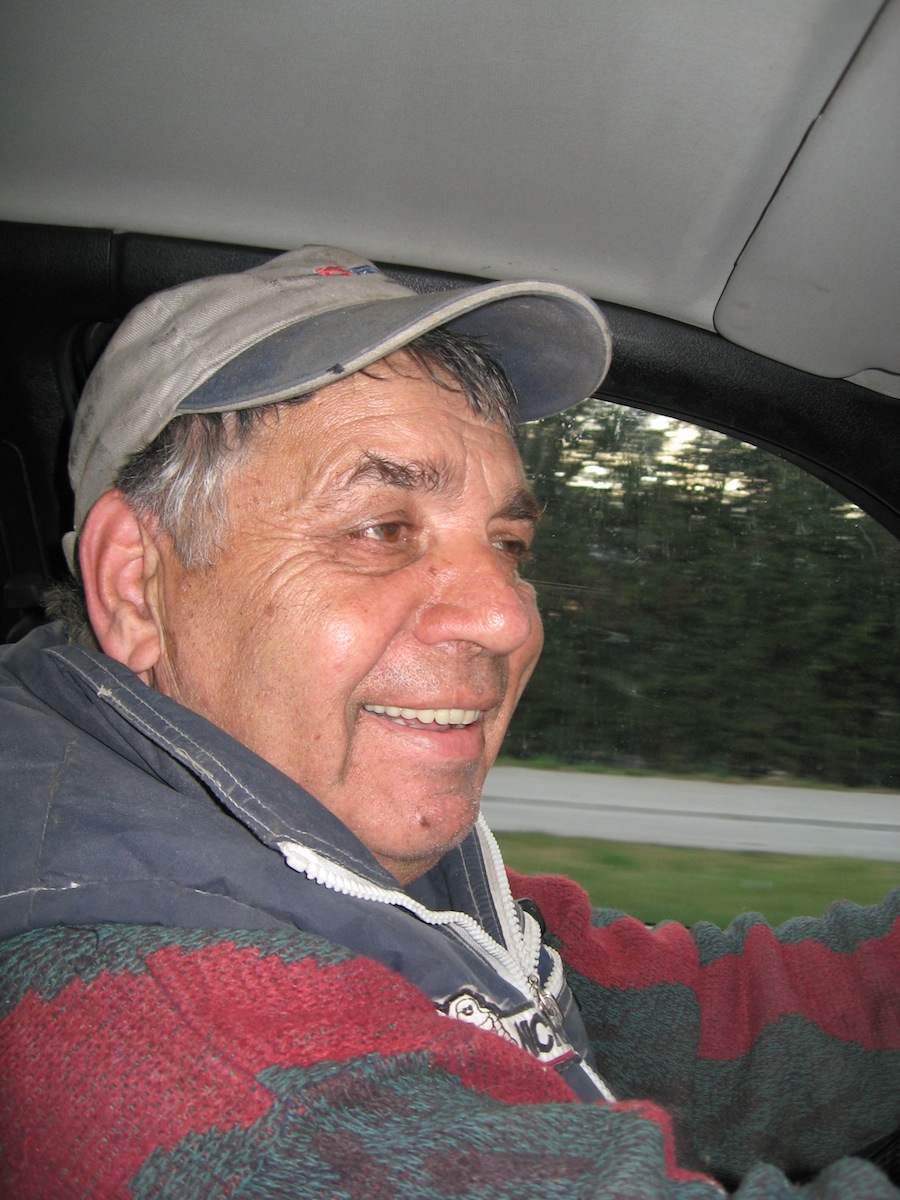
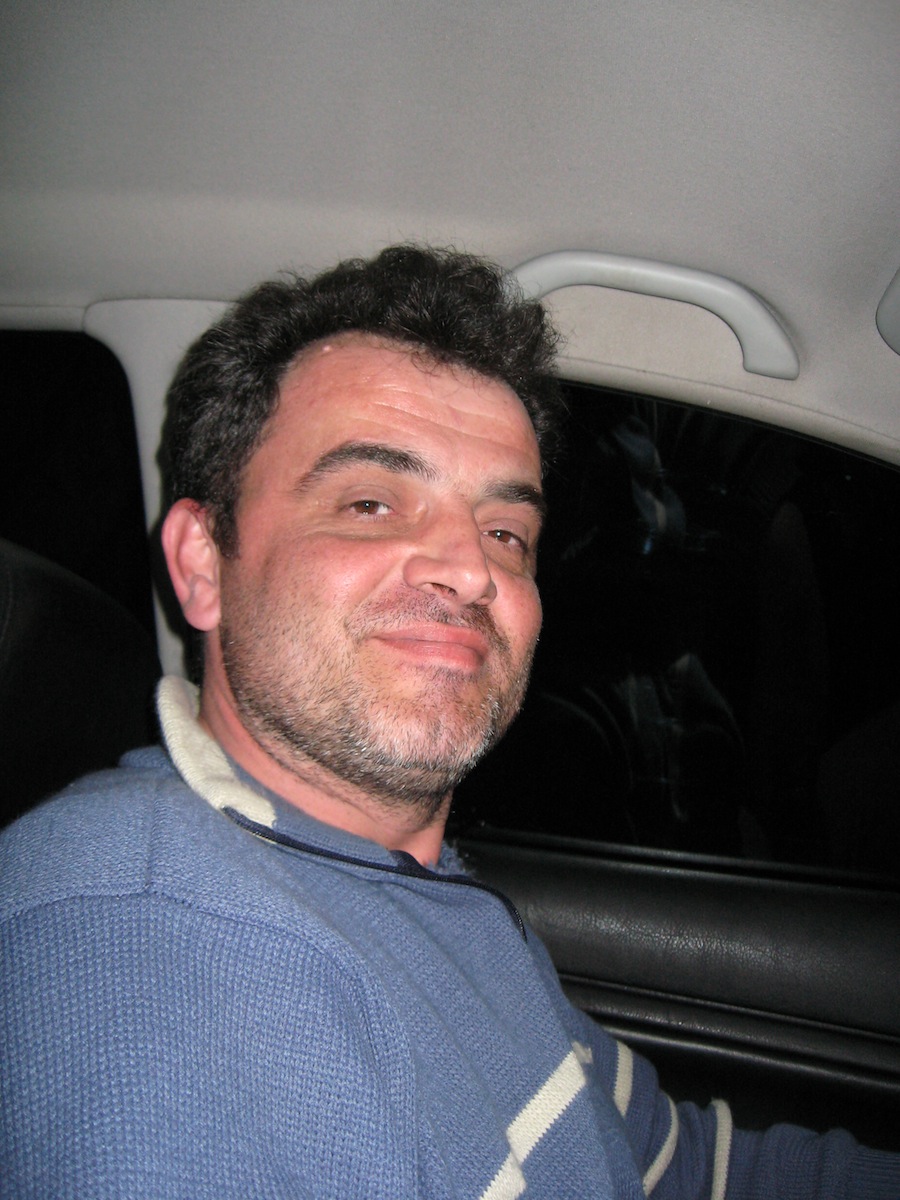
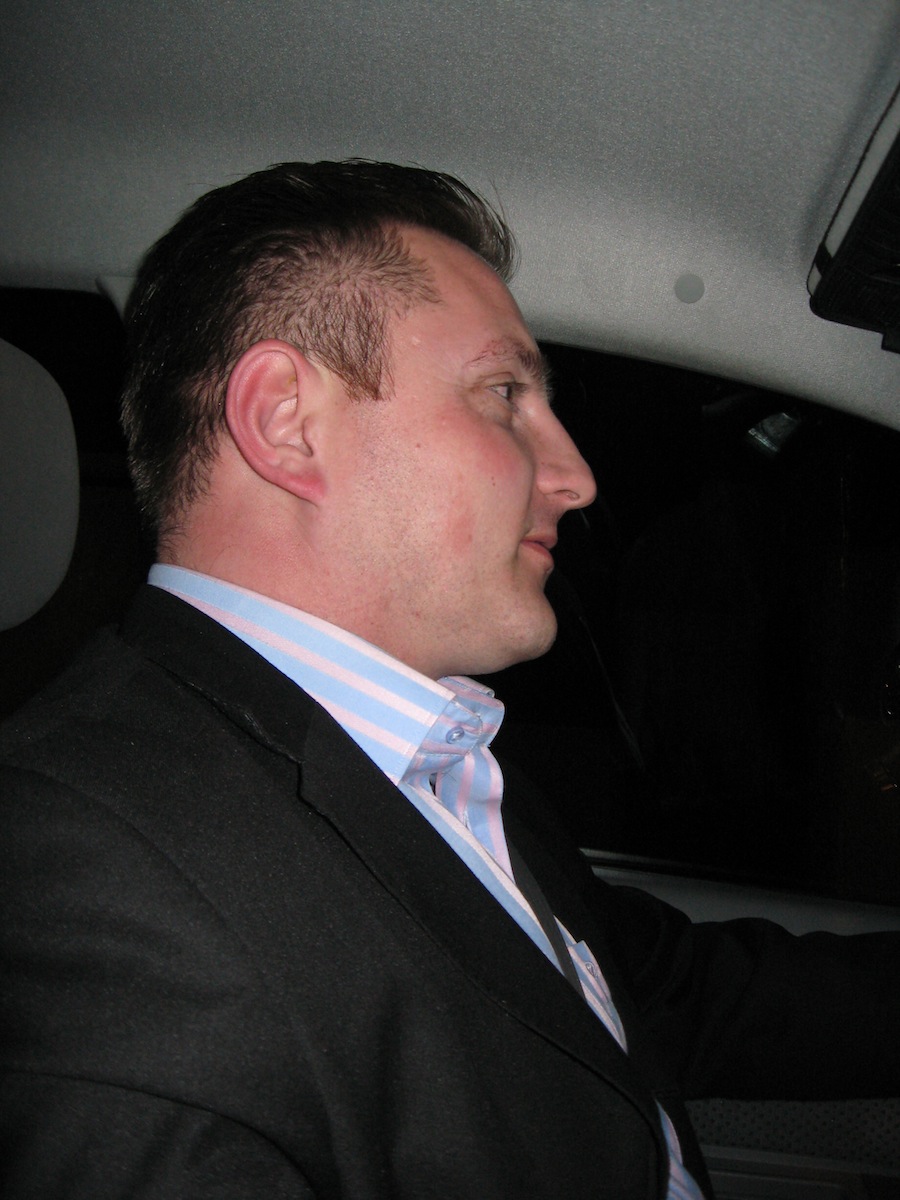
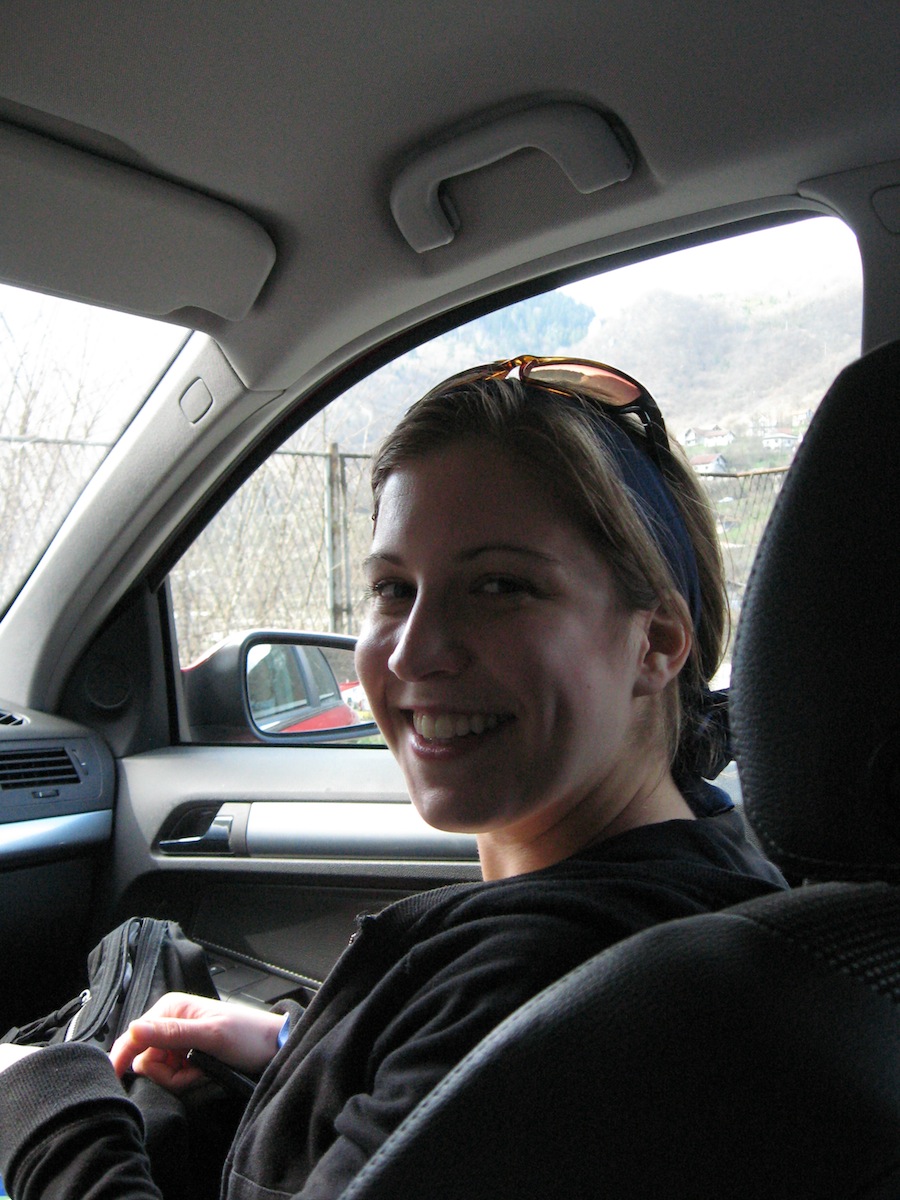
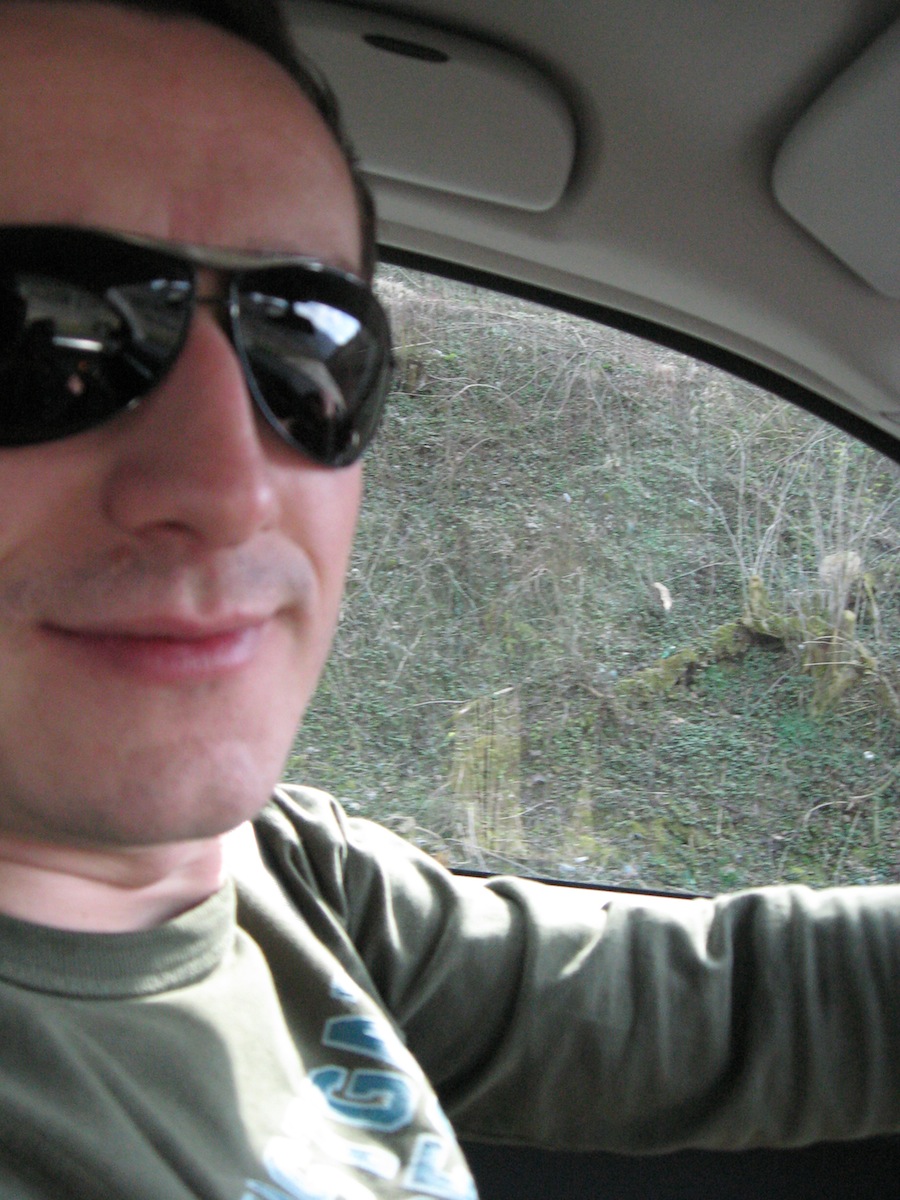
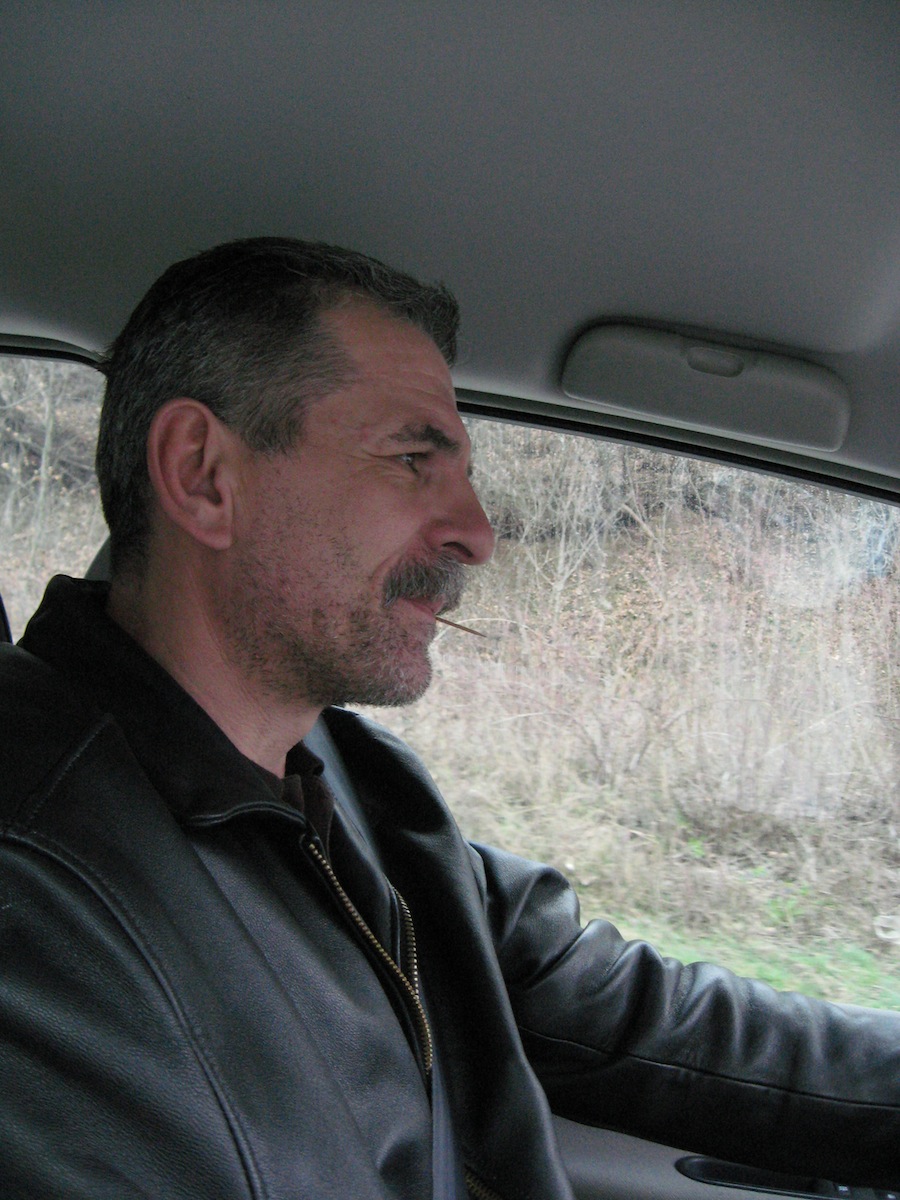
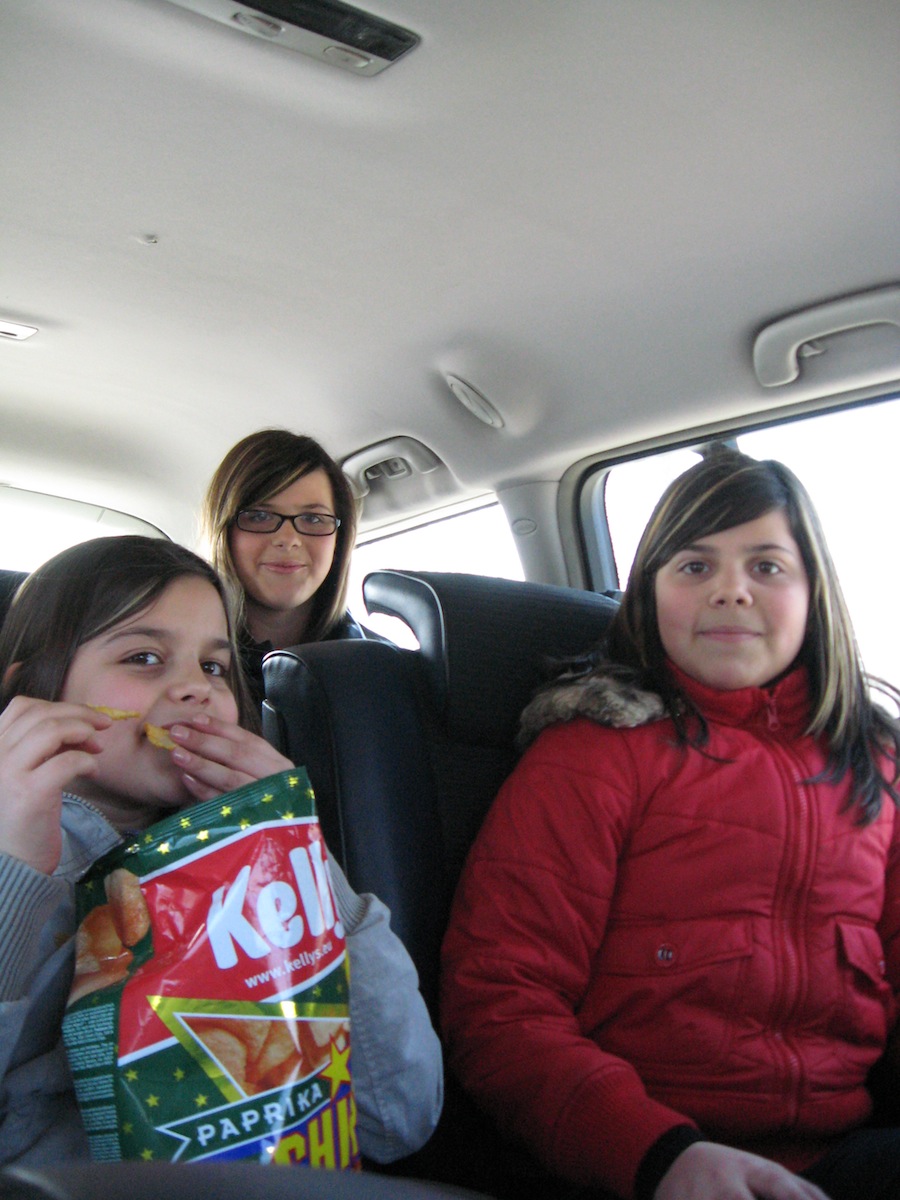
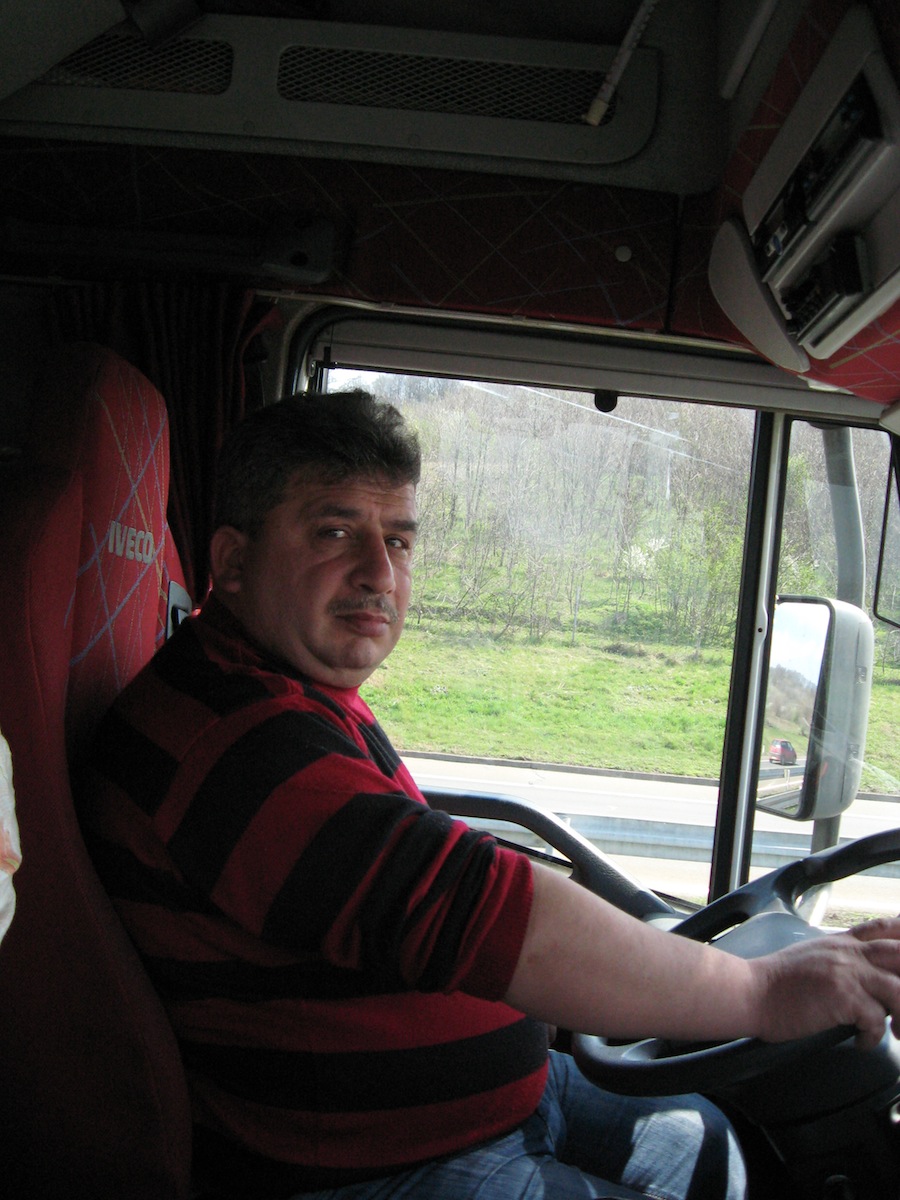
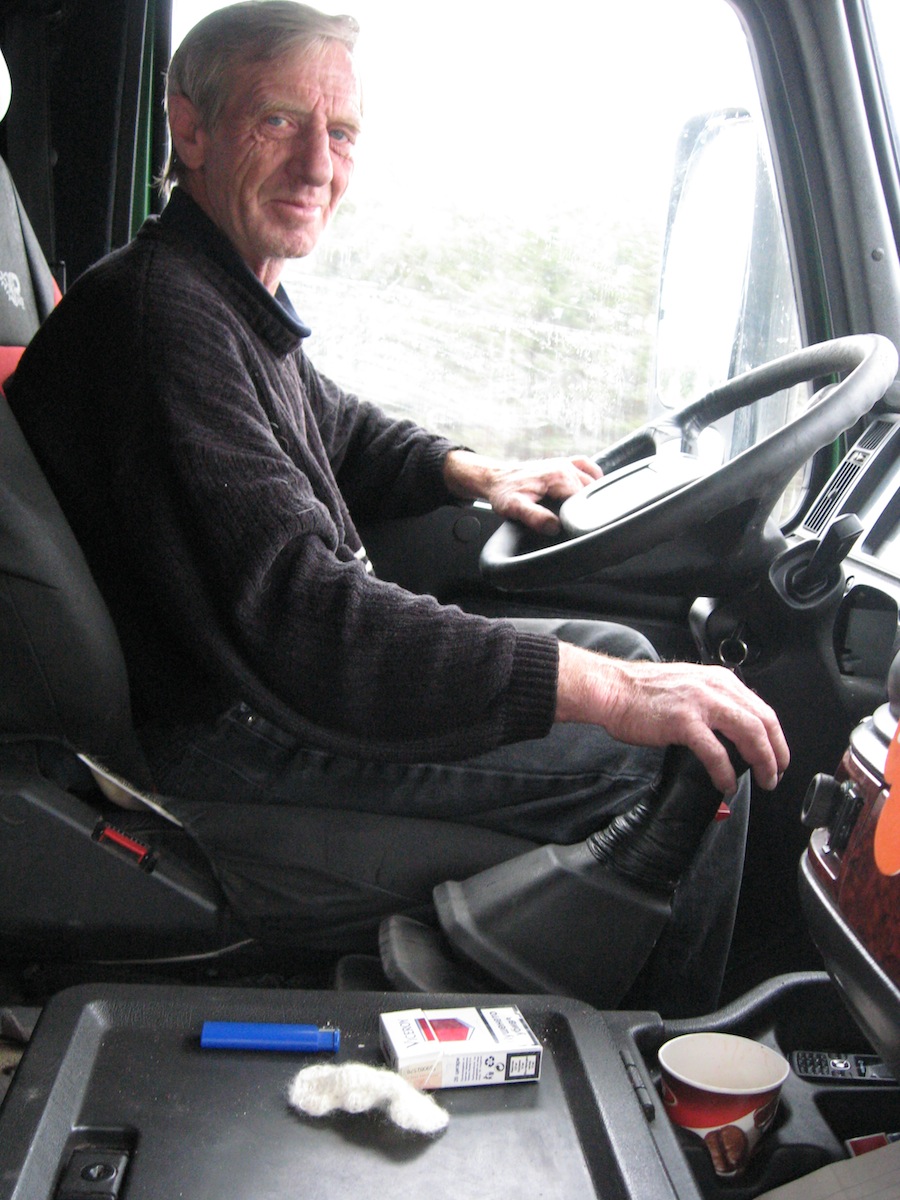
Alcune delle persone che hanno dato un passaggio a Pippa.
Some of the persons which had given a passage to Pippa.
| Certo l’altro elemento necessario per fare l’autostop è affidarsi alla Provvidenza, che sicuramente si occuperà del nostro cammino (evidente il parallelo con il pellegrinaggio; infatti su di un quaderno che portava con sé nel Viaggio delle spose troviamo il testo di Dum pater familias, antico canto dei pellegrini). Già in passato si era occupata da artista di questa modo di viaggiare, esponendo nella mostra Più oltre – a Perugia nel 2004 – una serie di ritratti fotografici di chi le aveva dato dei passaggi, ritagliati a forma di mezzi di trasporto. Pippa fotografava tutti quelli con cui saliva in auto e quando possibile registrava anche la conversazione che si svolgeva nel tratto di strada condiviso. Il suo stile era di mettersi a bordo della strada con un cartello, che indicasse il luogo che desiderava raggiungere. Nel viaggio delle spose, per rendere ancora meglio l’idea della fratellanza, collaborazione ed unione, i cartelli con i nomi delle città venivano spesso preparati dalle persone incontrate nelle tappe precedenti. | Of course another thing needed is a belief in Providence, which in a way will guide our trip (the parallel with pilgrimage is obvious; a notebook Pippa carried with her during the Brides’ Trip included the text of Dum pater familias, ancient pilgrim’s chant). Pippa had previously dealt with hitchhiking in her hart; the exhibition Più oltre – in Perugia in 2004 – was a series of portraits photographs of people who gave her lifts, cut to form the outlines of different means of transport. She photographed all of her drivers and also recorded their conversations when possible. Her technique was to stand by the side of the road, holding a sign indicating her destination. On the Brides’ Trip, which was intended to celebrate the ideas of fraternity, collaboration and fellowship, the signs of the names of the towns were often made by the people met in previous stages. |
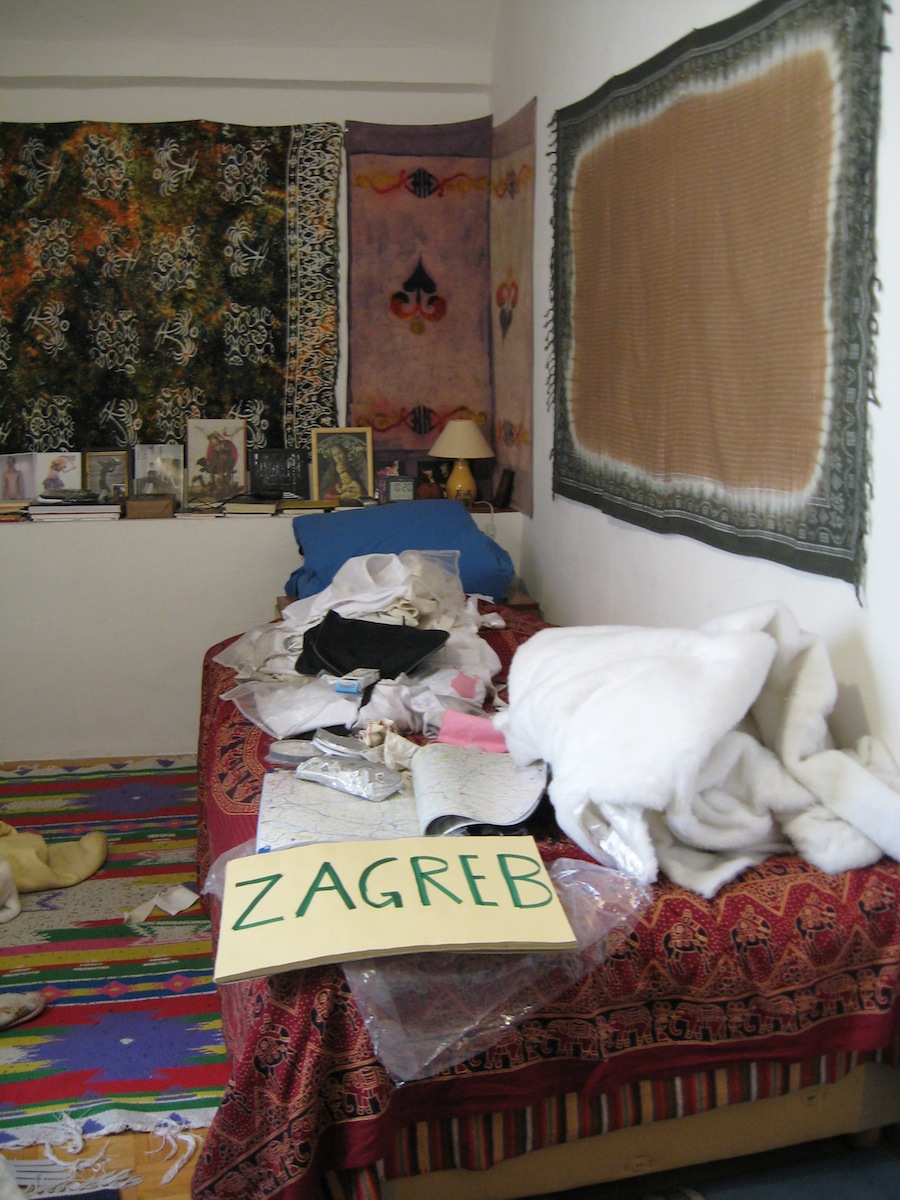
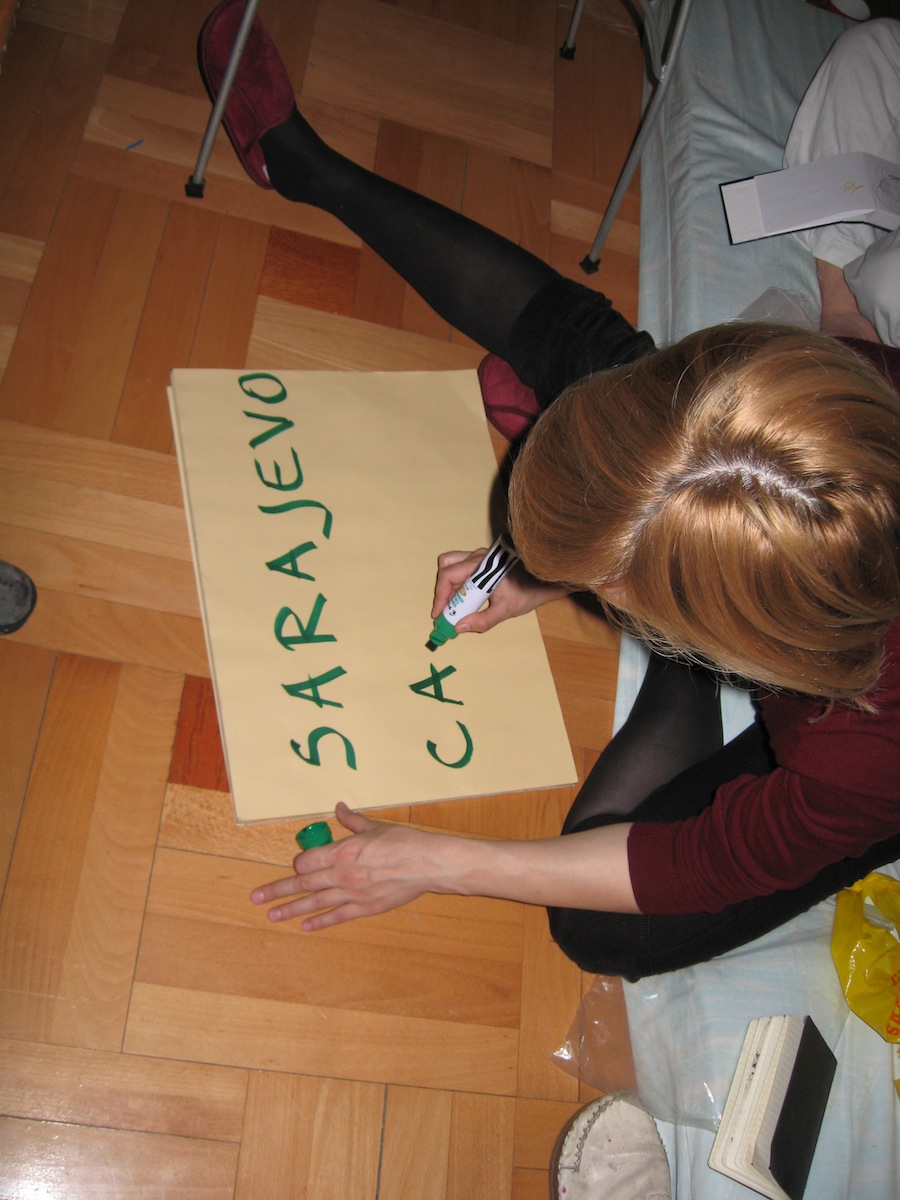
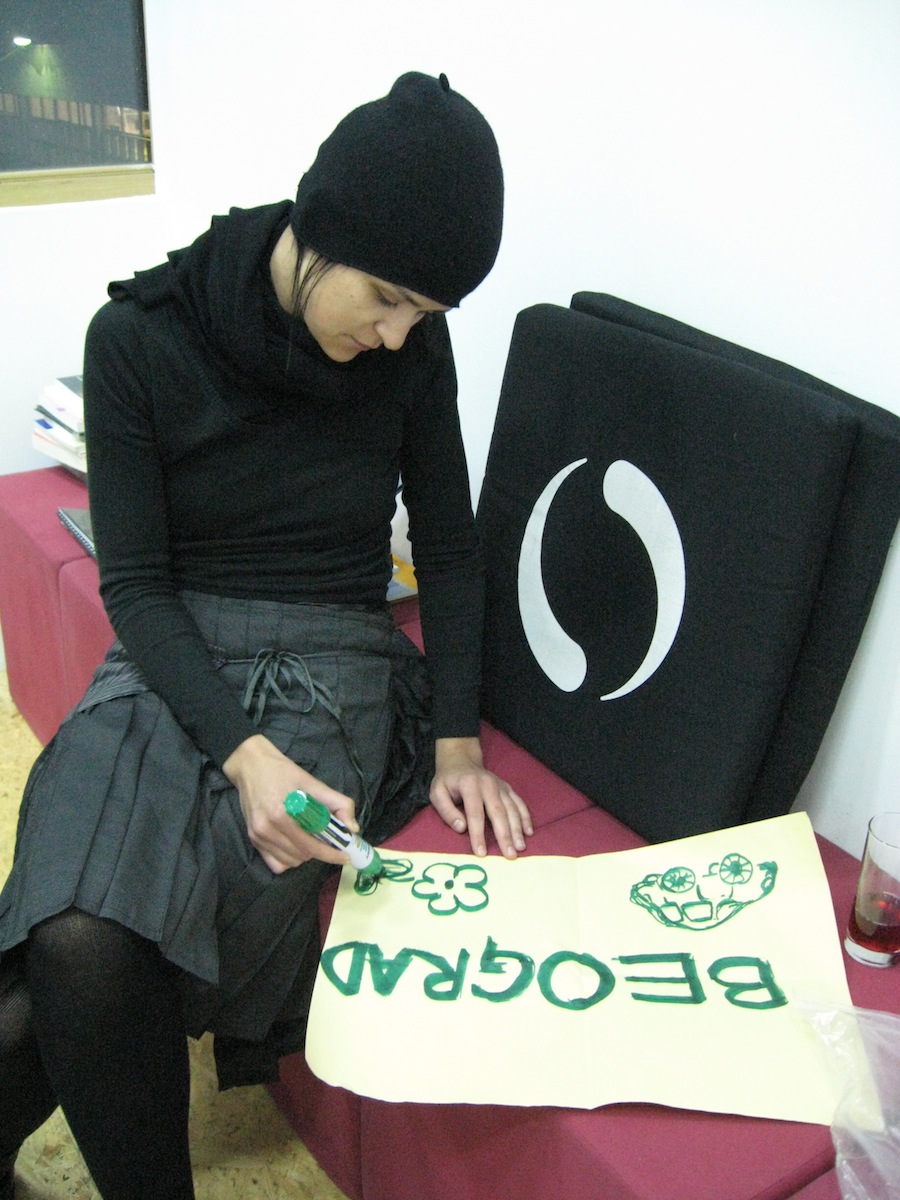
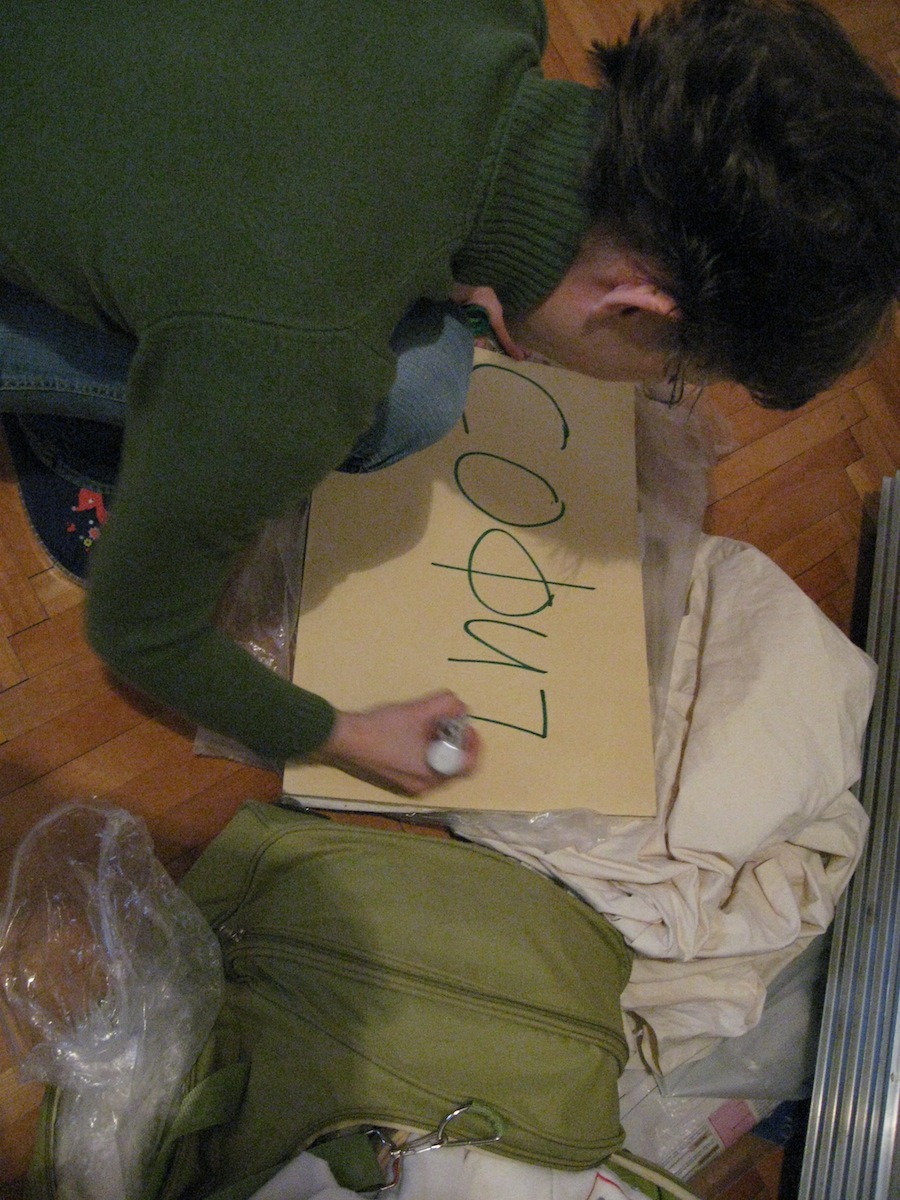
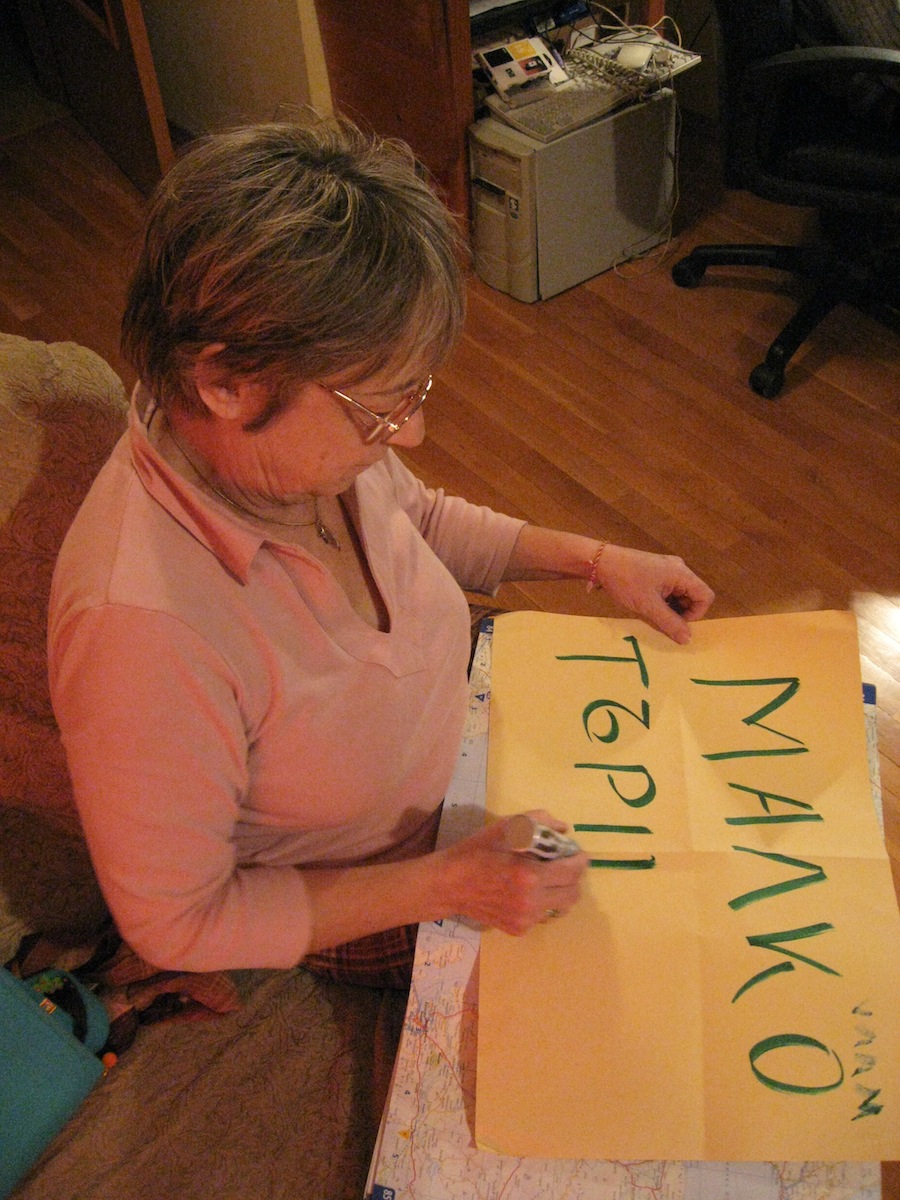
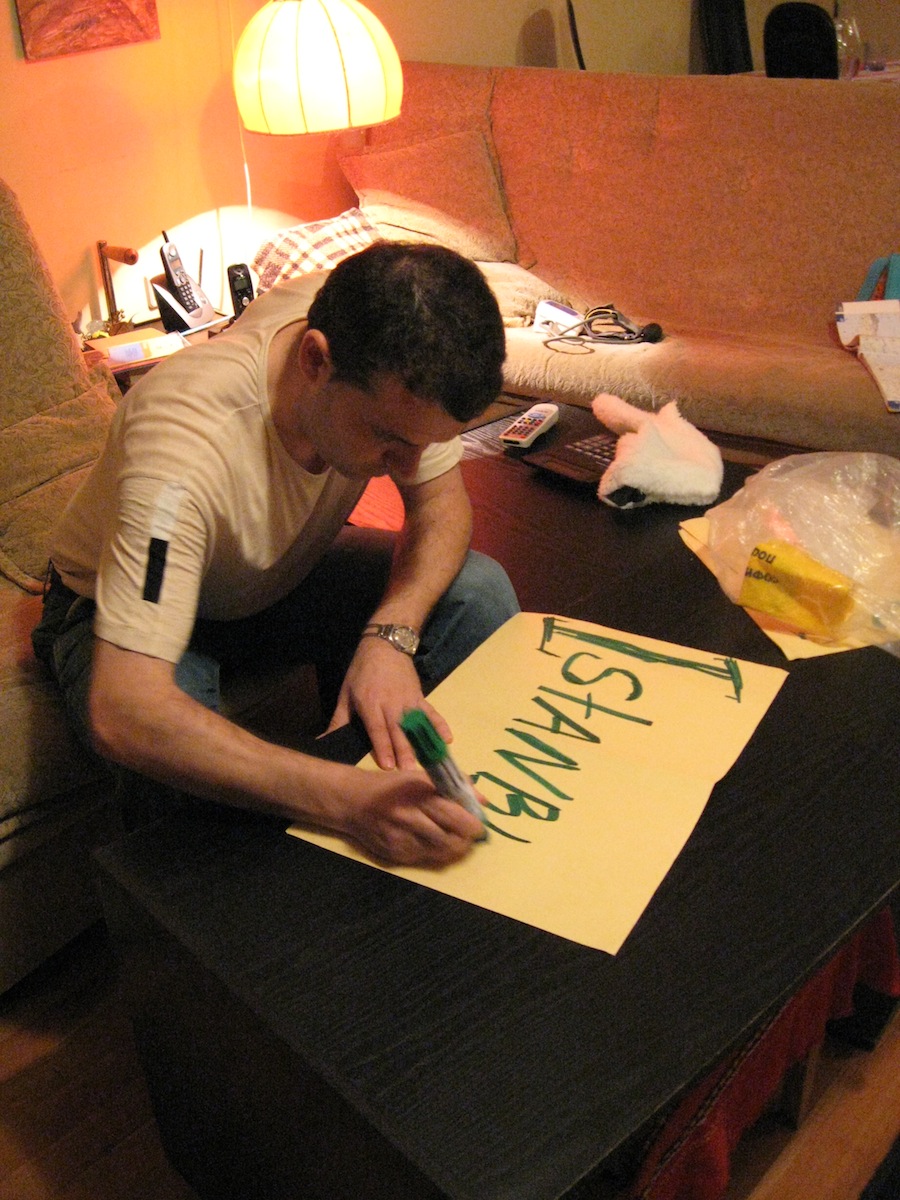
Le persone che hanno accolto Pippa, preparano il cartello per la tappa successiva.
The people who welcomed Pippa, making the banner for the next stage.